Featured snippets are pieces of text that appear at the top of the Search Engine Results Page (SERPs). Google highlights featured snippets to provide quick answers to user queries. Featured snippets are known as “position 0” as they are placed above all organic search results and are most likely to appear when using informational search queries. They come in the form of a table or text, sometimes including images or even a video. They are known to have a high click-through rate and are optimal for generating more traffic. In this article, we will dive further into what they look like and how you can optimize for them.
Understanding Why Google Likes Featured Snippets
Google likes featured snippets because it is easier for users to discover what they’re searching for. Google pulls featured snippets from already existing web pages that Google has deemed “suitable” to answer the relevant query. Providing quick, concise answers can improve the overall user experience and engagement by delivering a fast response. Other reasons include the rise of voice search, as a snippet will often appear for most voice search types of questions.
Examples of Featured Snippets
Featured snippets are broken down into 4 possible categories:
The Definition Box:
This is the most common and is a snippet of text meant to give users the quickest, “short and sweet” answer for a definition or description. They are commonly used for “What is” types of queries.
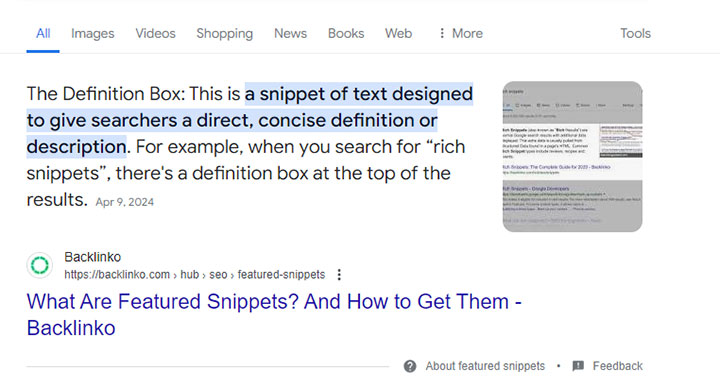
The Table:
This is where Google will pull information and display it in table form. For example, a table will appear if you want to see the size of doors or sports results.
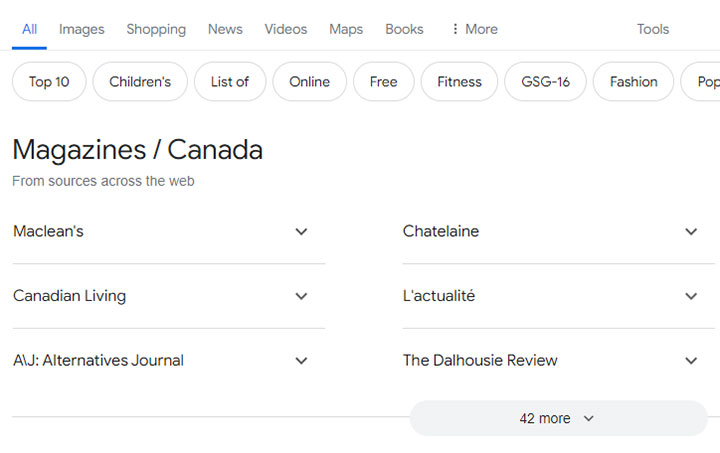
The Ordered List:
When asking for list-based queries, such as top 10, recipes, or anything that requires a set of steps, a list will appear.
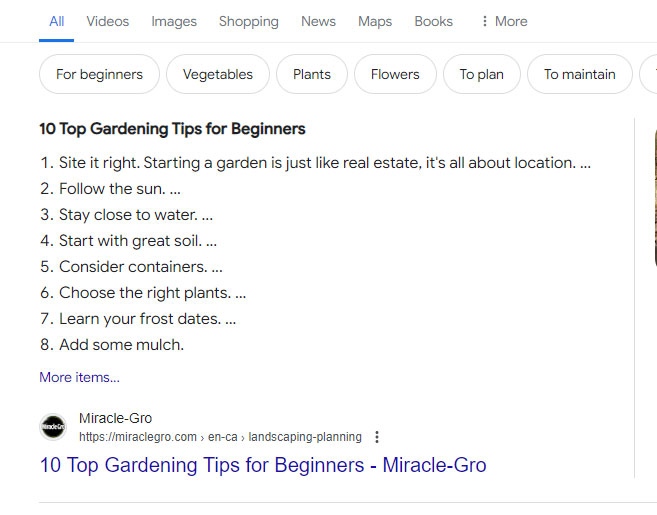
The Unordered List:
This is similar to the order list except it displays a list where the order doesn’t matter. For example, if you wanted to know the best grammar tools online, they may not have a specific ranking order but simply a list of the top.
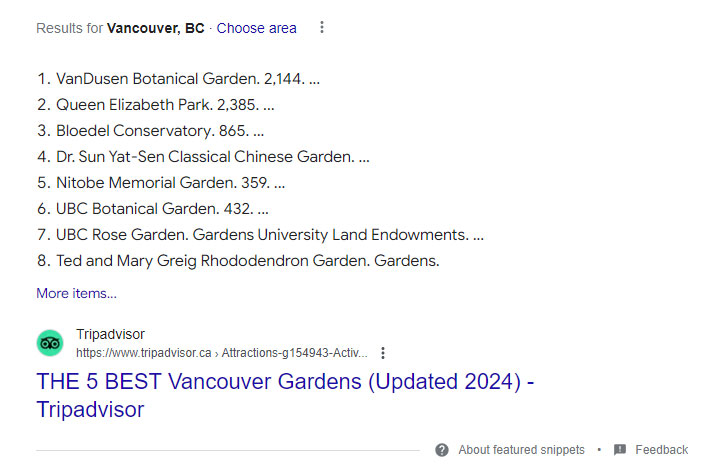
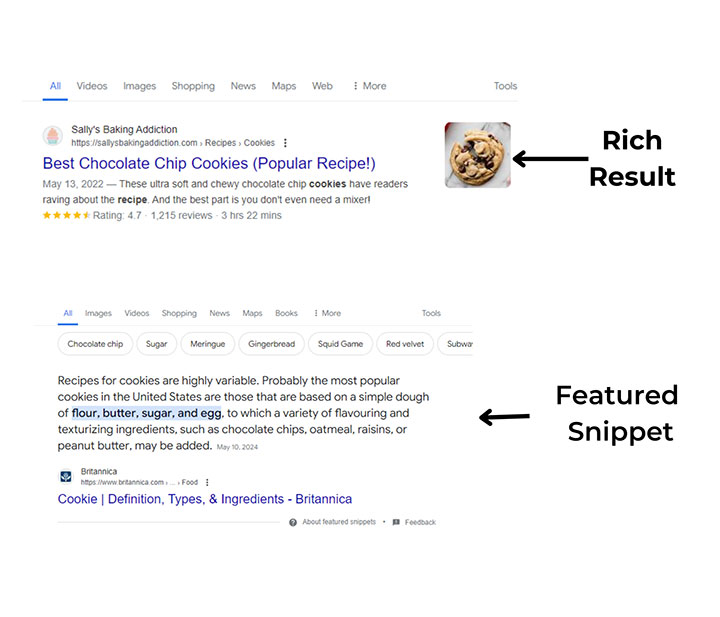
Rich Results vs Featured Snippets
Rich results and featured snippets often get mixed up as they can be defined similarly. The key difference is that rich results are enhanced organic search results, while a featured snippet answers a question. Rich results are usually cards or snippets that enhance normal page results, such as images, ratings, and reviews and appear as a panel or a carousel, not necessarily at the top of the page. The way to achieve a rich result is by optimizing your website with schema markup, a snippet of code used to indicate relevance to search engines. They are equally as important as a featured snippet and can also improve the visibility of your website by providing better information and a better experience for your user on the Search Engine Results page.
Are Featured Snippets Good for SEO?
Featured snippets are good for SEO because they rank your site at the top of the results and also have the highest click-through rate. Thereby giving you the most visibility on the search page. Some argue that it does not improve the click-through rate, as users can get their answers immediately through Google Search. However, snippets don’t show all the information, and for queries that need more context, users are more likely to click through to read the entire page. Overall, featured snippets are a fantastic way to boost your visibility and generate more traffic.
How Do I Optimize To Appear for Featured Snippets on Google?
Now that we understand featured snippets and their importance to SEO, let’s discuss how to optimize for them.
On-Page SEO, Keeping it “Short and Sweet”
When designing your content for featured snippets, keep it as concise as possible when answering users’ questions. This can include definitions, lists, FAQ-style questions, etc.
Competitive Research
It’s essential to base your choices on thorough keyword and competitive research. This involves observing the Search Engine Results Page to identify the types of questions triggering a featured snippet, the keywords and phrases used, and checking out the “people ask” section. Don’t hesitate to leverage other tools like Google Trends, Google Search Console, and SEMRush for a comprehensive analysis.
Keyword Research
Tried-and-true keyword research will always be effective in appearing for featured snippets. It’s important to use keywords in headers and tags in the form of questions for Google to understand your content and use as a reference for the snippet. This can be guided by competitive research as well.
Use Different Phrasing for the Same Question
Google still enjoys long-form content, so when creating your content, you want to address as many related questions as possible to increase your chances of appearing for a snippet.
Optimize For The Type of Snippet You Want to Appear For
When optimizing, always keep the type of snippet in mind. For example, if you want to appear for a definition, have a sweet and short one in the content Google can pull. Additionally, if you want to appear for a list, use the question in the header, followed by bullet points. The same strategy can be used for a table. Always organize your content structure based on queries.
By following these steps, you will be well on your way to being displayed in a featured snippet. If you are interested in learning more, please check out more of our other articles on various topics related to digital marketing here. Or, if you need help with your SEO and getting featured snippets for your website, contact us for a solution tailored to your needs.




